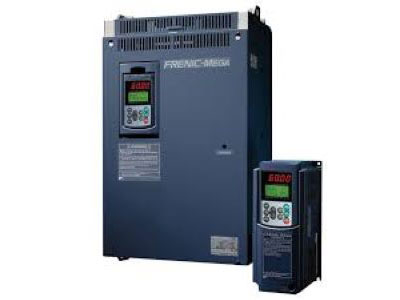Key Takeaway
To use a Variable Frequency Drive (VFD), start by connecting it to your AC motor and power supply. Adjust the VFD settings to match your motor’s specifications, including input voltage, frequency, and current ratings. Use the control interface to set the desired operating speed, typically by adjusting parameters like frequency and acceleration/deceleration rates. Ensure safety by configuring overload protection and braking settings as per your application needs. Test the setup carefully to ensure smooth operation and make adjustments as necessary for optimal performance. VFDs enable precise control over motor speeds, enhancing efficiency without compromising power output, making them ideal for various industrial applications requiring flexible and energy-efficient motor operations.
Initial Setup and Installation
Installing a Variable Frequency Drive (VFD) properly is crucial for its optimal performance. Start by selecting a suitable location, ensuring it’s free from excessive heat, moisture, and dust. Proper ventilation is essential to prevent overheating. Mount the VFD on a flat, vibration-free surface, using appropriate hardware to secure it firmly. Before wiring, double-check that the power supply matches the VFD’s voltage and current requirements. Connect the power cables to the input terminals, following the manufacturer’s guidelines. Proper grounding is vital to avoid electrical noise and ensure safety. Once the power connections are secure, connect the motor leads to the VFD’s output terminals. Make sure the motor is compatible with the VFD specifications to avoid damage. Verify all connections are tight and secure, as loose connections can cause malfunctions.

Programming and Parameter Setting
Programming your VFD involves setting various parameters to match motor and application requirements. Start by accessing the VFD’s control panel or using software for advanced models. Begin with basic settings such as motor voltage, current, and frequency. These parameters ensure the VFD operates within safe limits.
Next, set the acceleration and deceleration times. These control how quickly the motor reaches the desired speed and stops. Properly adjusting these times can prevent mechanical stress and enhance performance.
For applications requiring precise speed control, enable the VFD’s feedback system, such as an encoder. This setup provides accurate speed monitoring and adjustment.
Don’t forget to configure the protection settings, including overload protection and fault detection. These features safeguard the motor and VFD from potential damage.
By carefully programming and setting these parameters, you can optimize the performance, safety, and reliability of your VFD in any industrial application.
You May Like to Read
Monitoring and Maintenance Tips
Regular monitoring and maintenance of your Variable Frequency Drive (VFD) can significantly extend its lifespan and ensure reliable operation. Start by frequently checking the VFD’s display panel for any error messages or warnings. These alerts can signal early signs of potential issues. Periodically inspect the cooling fans and heat sinks for dust accumulation. Cleaning these components can prevent overheating and improve efficiency.
Verify that all electrical connections remain tight and secure, as loose connections can cause voltage drops and erratic operation. Keep an eye on the VFD’s operating temperature, ensuring it stays within the recommended range, since excessive heat can degrade electronic components over time. Regularly update the VFD’s firmware if the manufacturer releases new versions. Firmware updates often include performance improvements and bug fixes. By following these tips, you can ensure your VFD operates smoothly and efficiently in any industrial application.
Common Troubleshooting Techniques
Despite careful setup and maintenance, VFDs can still encounter issues. Knowing common troubleshooting techniques helps quickly resolve these problems. If the VFD fails to start, check the power supply and ensure all connections are secure. Verify that the input voltage matches the VFD’s specifications. For erratic motor behavior, inspect motor leads and connections for signs of wear or damage. Incorrect wiring can cause the motor to run improperly. If the VFD displays fault codes, consult the user manual to identify the issue. Common faults include overvoltage, undervoltage, and overcurrent. Address these by adjusting settings or checking the power supply. For persistent problems, consider using diagnostic tools like oscilloscopes to analyze the VFD’s performance. These tools help identify electrical noise or signal interference. By understanding these troubleshooting techniques, you can maintain VFD performance and ensure reliability in industrial applications.
Advanced Usage Tips
To get the most out of your Variable Frequency Drive (VFD), consider some advanced usage techniques. First, utilize the VFD’s built-in PID controller for applications needing variable speed control. This feature ensures precise speed regulation based on sensor feedback. Integrating the VFD with a Programmable Logic Controller (PLC) allows for automated control, enabling advanced functionalities like remote monitoring and control.
Take advantage of the VFD’s energy-saving features, such as automatic energy optimization, which adjusts motor speed based on load requirements, thus improving efficiency. For applications involving multiple motors, consider using a multi-drive configuration. This allows one VFD to control several motors, reducing costs and simplifying wiring.
Regularly reviewing the VFD’s performance data and adjusting parameters as needed can help optimize operation. By implementing these advanced techniques, you can enhance the efficiency, functionality, and cost-effectiveness of your VFD systems, ensuring they meet the demands of modern industrial applications.
Conclusion
Using a VFD effectively involves proper installation, precise programming, regular monitoring, and troubleshooting. By following these guidelines, you can ensure your VFD operates efficiently and reliably, enhancing the performance of your industrial applications. Remember, a well-maintained VFD not only improves motor control but also extends the lifespan of your equipment. Whether you’re a seasoned engineer or new to the field, mastering VFD usage can significantly impact your operations, leading to increased productivity and reduced downtime. Always refer to the manufacturer’s manual for specific instructions and safety guidelines tailored to your VFD model. With proper care and attention, your VFD can be a powerful tool in your industrial arsenal.
